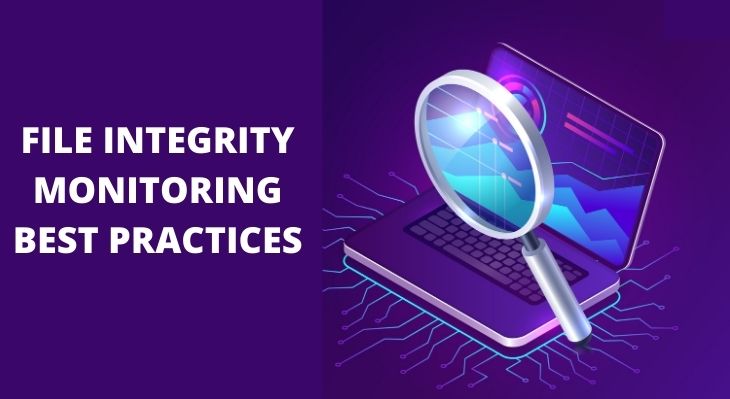Most of the architectural information of the organizations is stored in files.
With the increase in cyber-attacks, it has become important for business owners to update their security from time to time.
File integrity monitoring assists users in securing their network architect information and provides protection from any cyber-attack.
Whether it may be log data, organizational data, application data, or any sensitive data that adds to the value of the organization’s technical infrastructure, it is stored within the file system.
Loss of such critical data causes financial as well as goodwill damage to the organization.
File integrity majorly serves users in detecting unlawful activities, unauthorized changes and updating users about the health of the system.
Let us answer some of the questions related to File Integrity Monitoring.
File integrity is a cybersecurity fundamental process wherein the integrity of a file is checked.
Within this process, a proper scanning of the file elements is done to ensure that the data within such files have not been tampered with.
File integrity monitoring tools like Solar Winds Security Event Manager, OSSEC, Server & Application Monitor, etc., can assist users in upholding the integrity of the files being used.
Also Read: 10 Best Practices for Master Data Management to Consider
Some of the best File Integrity Monitoring Best Practices are discussed below:
File integrity will uphold the security of an organization.
Ignoring it might bring a financial burden on organizations and may also damage the company’s reputation.
With the majority of businesses now using technical methods in executing the tasks, it becomes essential to keep a security check.
Configurations of such tools are saved on file systems.
A proper audit of such file systems will inform the user about the current status of such tools, and thus users will be able to evaluate their security preparations.
Self-preparations will give users an idea about their existing technical scenarios.
Users through self-audit would be able to enhance their current knowledge related to their security systems being applied in their organization.
Moreover, they can improvise with their ideas related to security up-gradation on the basis of this knowledge.
Within a technical audit, a user is expected to record a complete evaluation of its network.
The step will include an assessment of all the devices running on the network, supportive architecture, and testing.
Users should ask for the below-mentioned questions to ensure better monitoring and safety:
Number of assets to be monitored
Understanding current organization better.
What sections do need proper monitoring?
Is there a team ready to manage the whole system?
Before considering any change in the security architecture, it is in the user’s best interest to understand the team’s requirements.
Upgrading security needs to be done with the proper involvement of every department of the organization.
This will help users better understand what change is needed from the security point of view and what current challenges they are experiencing.
Setting up servers with the same set of policies eases up the monitoring and auditing process.
Setting up of servers based on their functionalities and the locations will assist users in quick and easy monitoring of files.
Grouping of servers accordingly paces up monitoring for users, as the security policies have been applied accordingly.
While creating policies, a user is advised to be more specific.
If a user specifies the targets for file systems, the overall process of file integrity management is expected to become more efficient.
However, those directories should be avoided that are expected to change over a period of time.
Baselines are like the golden rules for a file wherein the standards are defined.
A user should properly evaluate this file before going for file integrity monitoring.
If the baseline is derived from a defective file and file integrity monitoring is applied to it, the results would always be inaccurate.
Log data should be stored appropriately and monitored.
The majority of the changes can be detected through them.
Moreover, in an efficient FIM, logs should be received, detected, and efficiently communicated to the admin in charge.
The benefits of receiving the log messages are that a user will evaluate the scenarios better in nearby future, and storing such log data can make sure that these logs are not altered.
Users should continuously keep checking their security infrastructure.
Users should have a clear understanding of what their current security infrastructure or policies are.
It will be easier for a user to understand what part needs to be reconstructed or reinstated in times of breach.
Another benefit of continuously checking the infrastructure is that it will help users save forensic costs and guide them for future protection from attacks.
Conclusion
With rising cyber-attacks, it is in the best interest of the users to keep their security update. The above mentioned steps will assist users in ensuring that the best procedures are being followed to uphold their existing networks’ security.
Also Read: Top 11 Endpoint Security Tools

